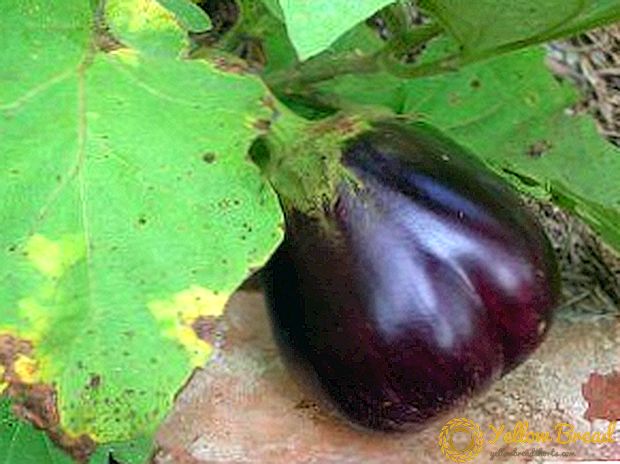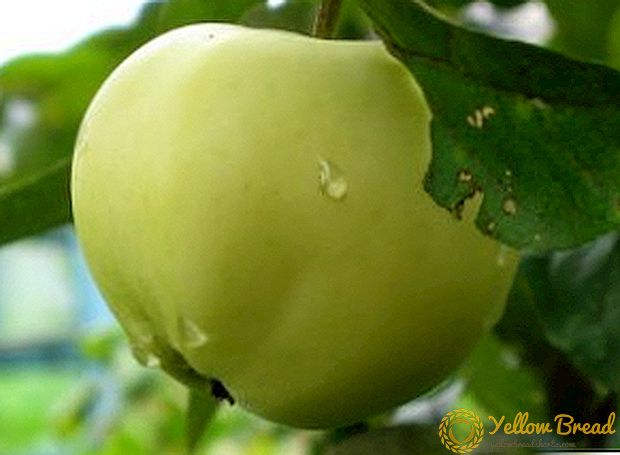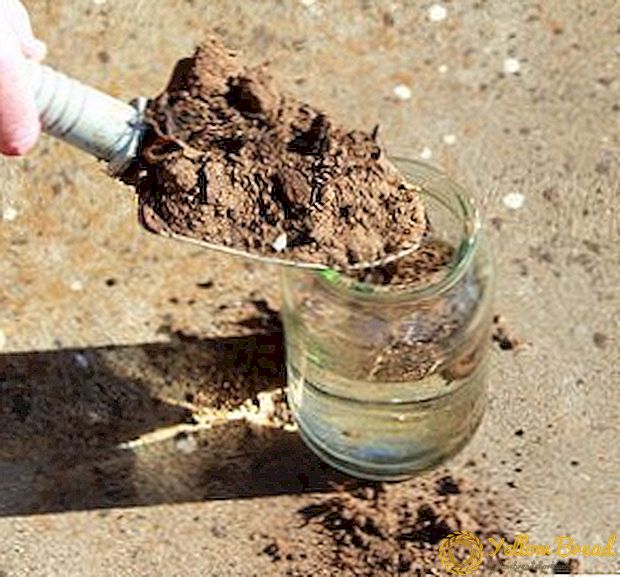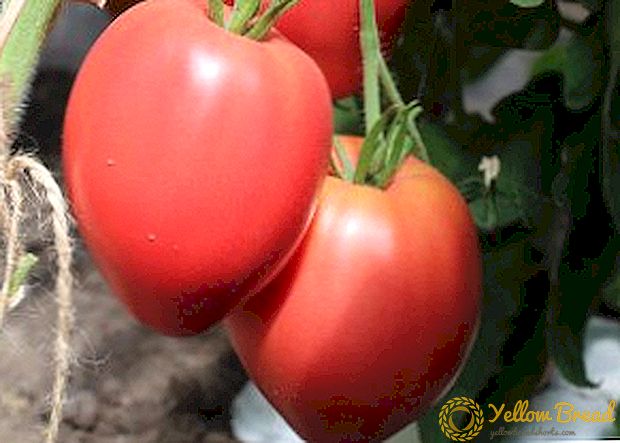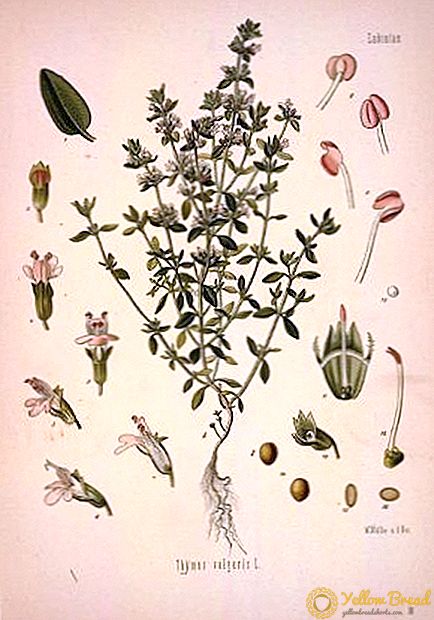 Thyme or Thyme - perennial herbaceous plant up to 15 cm in height, its shoots practically spread along the ground, and the stems with flowers are raised above the soil. The root system is pivotal.
Thyme or Thyme - perennial herbaceous plant up to 15 cm in height, its shoots practically spread along the ground, and the stems with flowers are raised above the soil. The root system is pivotal.
Leaves up to 10 mm long, oval, pointed end. The underside of the leaf is light-colored, slightly pubescent, the upper side of the leaf is smooth, the leaf is attached to the stem with a short stem. It blooms in summer with small fragrant flowers, pink-purple, which form a small inflorescence at the end of the stems. In the fall, fruits are formed in the form of a nutlet in a small box.
- Is it possible to grow thyme in a pot
- How to choose a place for indoor thyme
- Home Thyme Lighting
- Air temperature and humidity
- Preparing for thyme (thyme) planting at home
- Choosing a tank for planting thyme
- What should be the soil for planting
- How to plant thyme at home
- How to grow thyme (thyme) from seeds
- Growing thyme from cuttings
- How to care for thyme in a pot
- Thyme (Thyme): how to harvest
Is it possible to grow thyme in a pot
 The chemical composition of thyme contains essential oils, a large amount of vitamins and minerals, tannins, thymol and flavonoids. The plant has useful properties that allow it to be used for medicinal purposes, as well as in cooking as a fragrant spice. The benefits of thyme are obvious. How to plant it at home, we will tell you.
The chemical composition of thyme contains essential oils, a large amount of vitamins and minerals, tannins, thymol and flavonoids. The plant has useful properties that allow it to be used for medicinal purposes, as well as in cooking as a fragrant spice. The benefits of thyme are obvious. How to plant it at home, we will tell you.
Thyme is good for growing at home, because it is not too whimsical plant, to ensure its planting and the subsequent care of even a novice gardener. In the autumn-winter period, juicy greens will delight the eye, nourish the body with nutrients when it is eaten, and also help to cure many diseases.
After planting thyme in a pot, you will have a fresh aromatic spice, which can diversify the taste of your favorite dishes.
How to choose a place for indoor thyme
In the warm season, room thyme grows well on an illuminated window-sill with any humidity. Drought-resistant grass should be watered as the land dries around the bush. From autumn, the plant needs to reduce the ambient temperature, reduce the frequency of watering and not spray it.It is possible to relocate the container with growing thyme on the balcony or terrace, provided that the temperature is suitable.
Home Thyme Lighting
 Thyme is a very light-loving plant. Before planting a thyme in a pot, he needs to pick and release a well-lit window sill, preferably from the south side of the house. In winter, in the conditions of a short daylight, the thyme needs additional lighting for good development.
Thyme is a very light-loving plant. Before planting a thyme in a pot, he needs to pick and release a well-lit window sill, preferably from the south side of the house. In winter, in the conditions of a short daylight, the thyme needs additional lighting for good development.
Thyme grown in the shade, not as fragrant as that which grew under sufficient light.
Air temperature and humidity
In the summer, as the thyme grows very well and at normal room temperature, the plant can be located in a place of constant growth without thinking about the ambient temperature. In winter, thyme needs a cool place, the optimum temperature is + 5-13 degrees. A pot with thyme can be placed on the glassed-in balcony and make sure that the temperature does not fall below +5, otherwise the plant may die.
Thyme is not demanding on the characteristics of humidity.However, if you want to get it as an additional ornamental plant at home, you need to grow thyme with periodic sprays. This will improve its appearance, the bush will be more branchy. It is impossible to spray when growing thyme in a cool, it will badly affect the condition of the plant.
Preparing for thyme (thyme) planting at home
 Growing thyme at home is easy, if you first provide the plant with good planting conditions, not a high pot and suitable soil. The bottom of the container for growing thyme must be filled with a drainage layer of 20-30 mm, it can be broken bricks or a clay pot, pebbles, expanded clay or gravel.
Growing thyme at home is easy, if you first provide the plant with good planting conditions, not a high pot and suitable soil. The bottom of the container for growing thyme must be filled with a drainage layer of 20-30 mm, it can be broken bricks or a clay pot, pebbles, expanded clay or gravel.
Choosing a tank for planting thyme
If you are thinking about how to grow thyme from the seeds on the window sill and where to start, the definite answer is: you must first choose a container for planting. It is better to use for these purposes not a wide clay pot, if you plan to plant plants in individual tanks, or a plastic balcony box when planting a small bed of thyme. The depth of the tank should not exceed 15 cm for the favorable cultivation of spicy herbs.
What should be the soil for planting
Thyme grows well on light, loose soil. Prepare a soil mixture for thyme can be mixed peat, sod land and sand in equal proportions. You can use a mixture of substrate for cacti and chernozem in a ratio of 2 to 1. Such compounds are well suited for the cultivation of herbs for spices.
How to plant thyme at home
 Thyme can be planted at home both with seeds and cuttings, both methods of planting are good for cultivation of this useful weed. Each gardener chooses for himself the most appropriate option. The presence of free space around the bush will allow the shoots lying on the ground to take root, as a result, almost all the soil will be covered with a dense layer of juicy fragrant grass.
Thyme can be planted at home both with seeds and cuttings, both methods of planting are good for cultivation of this useful weed. Each gardener chooses for himself the most appropriate option. The presence of free space around the bush will allow the shoots lying on the ground to take root, as a result, almost all the soil will be covered with a dense layer of juicy fragrant grass.
How to grow thyme (thyme) from seeds
For planting thyme seeds in a prepared container with drainage, a soil mixture is poured, in which you can add perlite or vermiculite to better retain moisture in the soil. Then the substrate is moistened, seeds are sown, for ease of planting it is recommended to mix them with sand, after which the seeds are covered with a layer of soil not exceeding 10 mm.
Then the soil is regularly moistened with a spray bottle. Prior to the emergence of hardened shoots, a container with sown seeds of thyme is better to priten a little in order to avoid drying out of the shoots in direct sunlight. After the emergence of seedlings, the seedlings are thinned to provide space for the growth of the thyme bush.
Growing thyme from cuttings
New thyme bushes can be obtained by breeding and growing it by cuttings. To do this, after the thyme has faded, scissors cut the shoots, the lower part of which is cleared of leaves - and the cutting is ready. Then, in the prepared moistened soil mixture, poured over the drainage, thyme cuttings are planted, sprinkled with earth and watered. Watering should be carried out in a day or two until the appearance of new leaves, after which the frequency of watering is reduced.
How to care for thyme in a pot
 After the seedlings appeared from the seedlings or the creeping thyme cuttings have taken root, we can assume that the planting was successful and now it is necessary to provide the plant with sufficient care.Thyme care is infrequent watering, loosening the soil surface and observing the temperature and light conditions.
After the seedlings appeared from the seedlings or the creeping thyme cuttings have taken root, we can assume that the planting was successful and now it is necessary to provide the plant with sufficient care.Thyme care is infrequent watering, loosening the soil surface and observing the temperature and light conditions.
If desired, thyme can be fertilized with mineral-organic fertilizers, but the plant does not need additional fertilizer for the soil and can grow well without it.
Periodically, thyme bush should be cut with sharp scissors to form the density of the plant. Cut off shoots in early spring and after flowering, leaving about a third of the lignified thyme shoots.
Thyme (Thyme): how to harvest
Leaves and shoots from plants for fresh consumption can be cut at any time of the year. Cutting must be done carefully, if the root system is damaged, the whole plant may die.
 The curative raw material of thyme is all ground greens, which are best cut off before mid-summer, during the period when the first flowers began to appear. Harvested at this time the most fragrant harvest. Cut the shoots laid out in a thin layer on paper or suspended in a dark, ventilated place. Dried raw materials can be crushed and threshed, removing large stems.Dry thyme is stored in an airtight container for no more than two years without access to direct sunlight.
The curative raw material of thyme is all ground greens, which are best cut off before mid-summer, during the period when the first flowers began to appear. Harvested at this time the most fragrant harvest. Cut the shoots laid out in a thin layer on paper or suspended in a dark, ventilated place. Dried raw materials can be crushed and threshed, removing large stems.Dry thyme is stored in an airtight container for no more than two years without access to direct sunlight.

